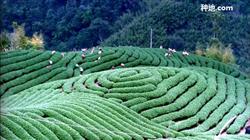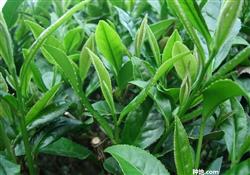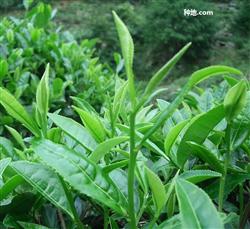How does mountain tea prevent pests without pollution

How does alpine tea prevent insect pests without pollution? Please guide the main tea plant diseases and insect pests that occur in tea gardens in high mountain areas: tea false-eyed green leafhopper, tea mites (mainly short-eyed mites and orange gall mites), tea weevil, inchworm (tea inchworm, silver inchworm), black whitefly, tea small leaf roll moth, tea round red spot, white star disease, tea cake disease, tea anthracnose, moss, lichen and so on. The main technical measures for integrated control of diseases and pests are summarized as follows: first, strengthen agricultural ecological regulation and control on the basis of agricultural control. 1. Scientific fertilization: scientific fertilization is carried out according to the growth law of tea trees, soil physical and chemical properties, climatic conditions and pollution-free requirements. Fertilizing three times a year, mainly using organic fertilizer, N, P, K reasonable combination. Topdressing is mainly compound fertilizer, controlling the amount of urea application, vigorously promoting bio-organic fertilizer, 2. Clearing and closing the garden in winter: completely remove the residual branches and withered leaves in the tea garden every winter and put them into deep burial or destruction between rows. From December to January, the garden was sealed with 150 times of crystal stone sulfur mixture to reduce the number of overwintering diseases and insects. 3. Tea table cutting and light pruning: 7 ~ 10 years old tea trees were cut on the table, and Bordeaux solution was sprayed to control moss and lichen. at the same time, light pruning and heavy pruning methods were adopted according to the growth of tea trees. 4. timely picking: generally pick by hand to achieve the combination of picking and retention. Timely picking to reduce the occurrence of false-eyed small green leafhopper and tea mites. Second, strengthen biological control, protect and make use of natural enemy resources to vigorously promote botanical and microbial pesticides, at the same time strengthen measurement and forecasting, according to the occurrence of pests and natural enemies, timely release information and guide prevention and control. Reduce the frequency of medication, try to avoid the use of drugs in the peak period of natural enemies, and reduce the harm of beneficial natural enemies in tea garden, such as lacewings, pedestrians, Staphylins, spiders, predator mites and parasitic wasps. At the same time, food mites are caught in the tea garden. Scientific use of chemical pesticides 1. Strictly implement the guidelines for the rational use of pesticides, the regulations on the safe use of pesticides and the Circular issued by the county government, completely prohibit pesticides with high toxicity and high residues, adhere to the use of pesticides with low toxicity and low residues, and give priority to the promotion of biological pesticides. 2. Strengthen the measurement and forecast, insist on reaching the prevention and control target before using drugs, and strictly control the frequency and dosage of drugs. Spray only 5-7 times in the whole year, spring tea should not spray as much as possible, at most 1-2 times, summer tea should not be picked, summer tea should be sprayed 1-2 times, and autumn tea should be sprayed 2-3 times. The disease is mastered by spraying at the beginning of the disease when the tender leaves are spreading. 3. Pay attention to the techniques and methods of pesticide application: in order to avoid the resistance of pests, alternately use pesticides according to different types of pesticides, and vigorously promote the use of small aperture spray tablets (0.7~1mm). Click to get more tea planting techniques click to get more flower planting techniques click to return to the farming network
- Prev

How to use bio-pesticides in tea?
How to use bio-pesticides in tea? Please guide the current tea market, especially the tea export, which requires high quality and safety of tea. And biological pesticides, including microbial pesticides and botanical pesticides, they will not cause pollution to tea and the environment, and their toxicity to people and animals is very low, so they will not constitute residual toxicity.
- Next

What management should we pay attention to in winter tea?
How to manage spring tea? Please guide spring tea with good quality, large proportion of output and high economic benefits. How to make spring tea germinate early, pick tea early and go on the market early to increase the output value of spring tea is an important issue for tea farmers to increase the efficiency of the tea industry. The tea production before spring tea mining mainly pays attention to tea garden fertilization, tea tree pruning and freezing injury.
Related
- Fuxing push coffee new agricultural production and marketing class: lack of small-scale processing plants
- Jujube rice field leisure farm deep ploughing Yilan for five years to create a space for organic food and play
- Nongyu Farm-A trial of organic papaya for brave women with advanced technology
- Four points for attention in the prevention and control of diseases and insect pests of edible fungi
- How to add nutrient solution to Edible Fungi
- Is there any good way to control edible fungus mites?
- Open Inoculation Technology of Edible Fungi
- Is there any clever way to use fertilizer for edible fungus in winter?
- What agents are used to kill the pathogens of edible fungi in the mushroom shed?
- Rapid drying of Edible Fungi

